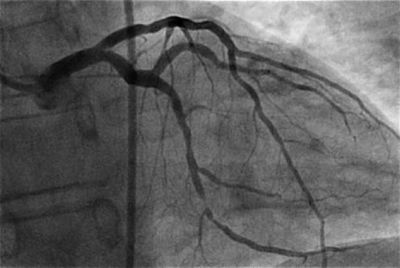Time is Muscle
Steve Q. was a previously healthy 49-year-old man when he got out of bed to use the bathroom in the middle of the night and then suddenly collapsed without warning. His wife awoke from sleep to find him unconscious on the floor. He was not breathing. She immediately called 911 for help and started CPR on her husband until paramedics arrived. An EKG promptly diagnosed a massive heart attack and Steve was immediately rushed to Mercy Hospital.
At Mercy, the heart attack team led by Dr. John Lee, an interventional cardiologist at Metropolitan Heart and Vascular Institute (MHVI), performed an emergency coronary angiogram and found a blockage in one of major arteries of Steve’s heart. This was successfully opened with a coronary stent within 30 minutes of his arrival. Although Steve was very ill upon arriving at Mercy, he eventually made a complete recovery. He is now back at work full time and enjoying a full life again with his family.
A large part of this success story can be credited to the rapid response team that worked quickly to open up Steve’s acute blockage. There’s a saying among cardiologists: “Time is muscle.” In the setting of an acute heart attack, the time it takes to open up the blockage and restore blood flow is crucial in saving the heart muscle, preserving heart function, and affecting patient survival. As a result of the nationally-recognized heart attack program created by MHVI cardiologists in collaboration with partners from emergency services, the median time in which it takes for a blockage to be opened in a heart attack patient (door-to-balloon time) at Mercy Hospital is approximately 50 minutes. This is 34% lower than the national average of 76 minutes.



Leave a Reply
Want to join the discussion?Feel free to contribute!